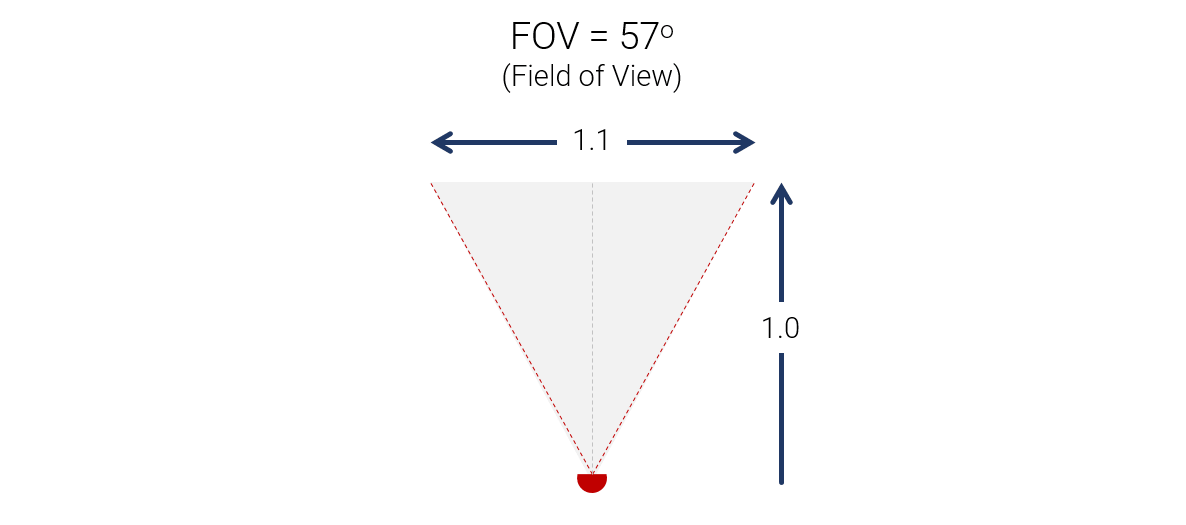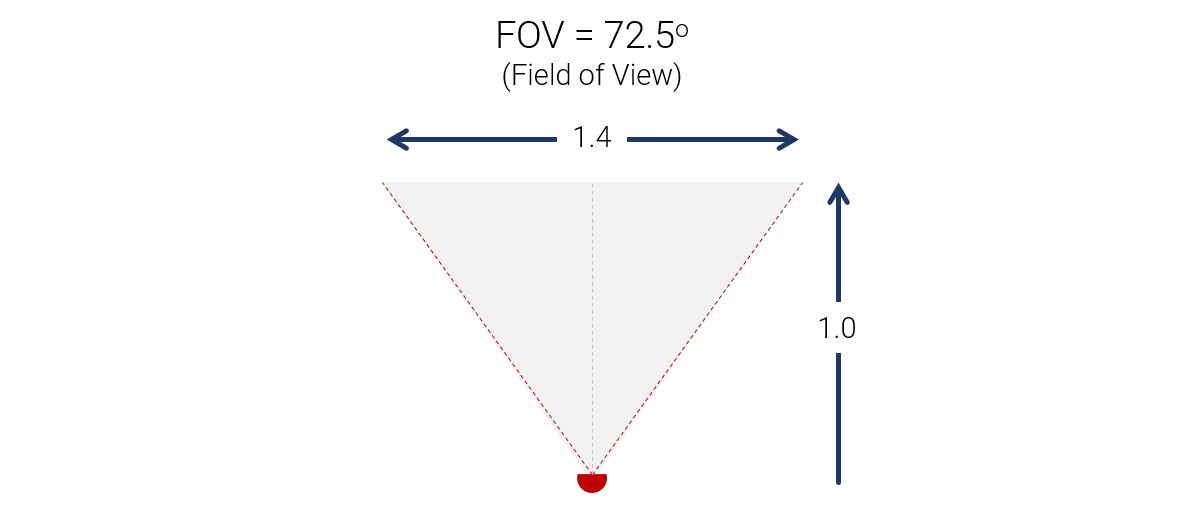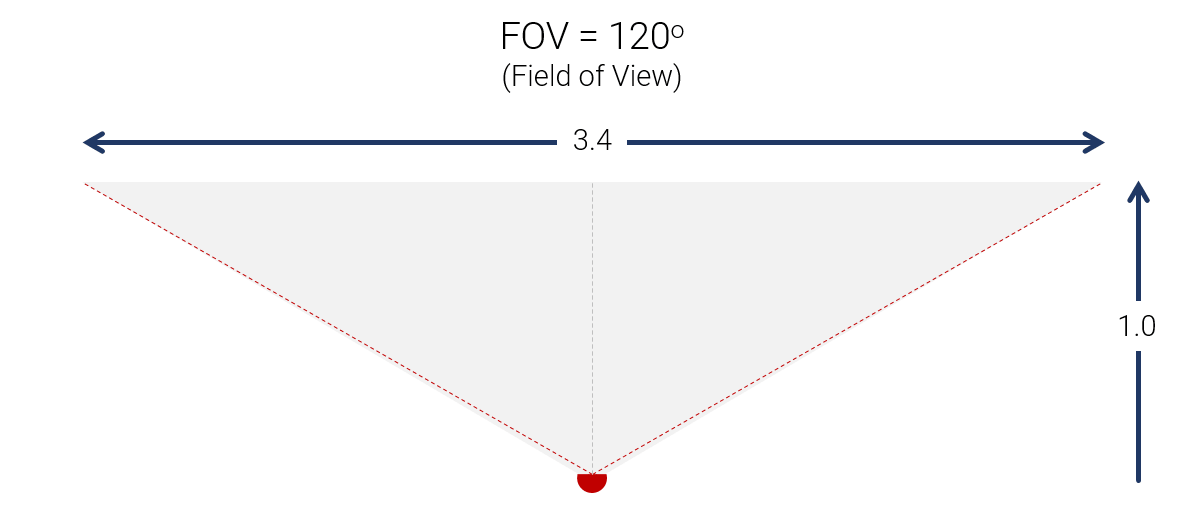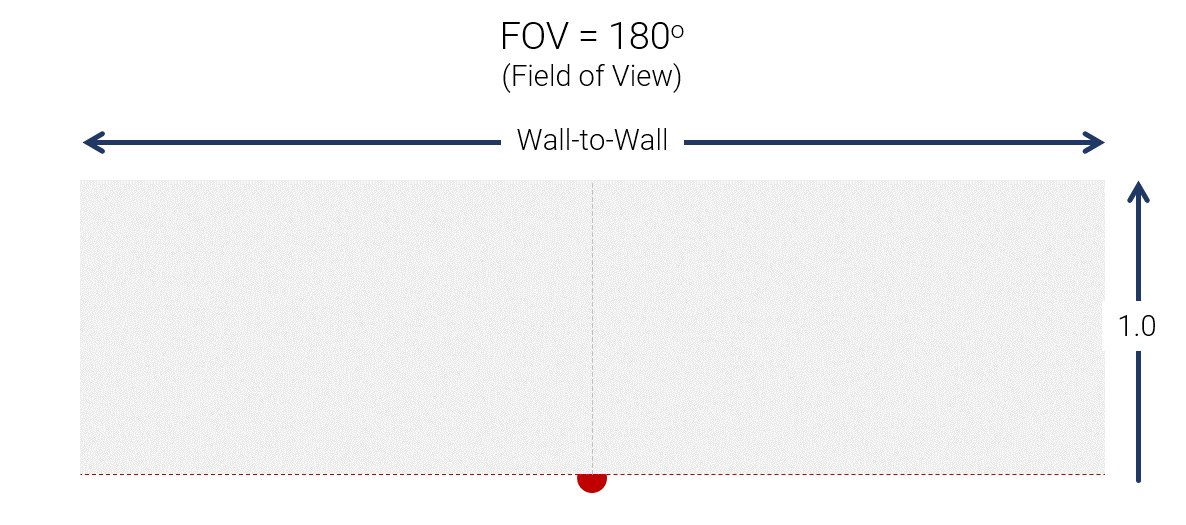(Updated) Buying Guide: Comparing Field of View When Buying a Conference Room Video Camera
Posted by Video Conference Gear on 1/22/2021
Updated January 2021. (click for link to previous article)
Think back to that geometry class you took, saying to yourself … "I'll never use this stuff, this is a waste of my time". I was right there with you, wondering how in the world things like Isosceles triangles and quadrangles and length times width would have any bearing on my life.
Well, here it comes, Field of View or Field of Vision (FOV) is a perfect example of needing to know a little geometry so you don't waste money on the wrong camera. In this guide, we're going to provide a breakdown of some popular FOV angles for video conference cameras.
What is Field of View (FOV) anyway?
In a classic definition, the FOV is what you can see without turning your head, it includes direct sight (what you see ahead of you) and your peripheral vision. For conference room video cameras, it's the specification for "what you see" through the camera lens and is measured in Degrees - in other words, we have single starting point (the camera) and the view radiates out, getting wider (visualize an upside-down triangle). Looking at our conference room cameras, the FOV ranges from 60° to 360°. From a buying perspective, a wider FOV is not necessarily better, it's just different. Different rooms and how they are used required different cameras, which is why there is so much variance when it comes to FOV.
Comparing FOV for Conference Room Cameras
For our comparison, we are going to look directly at how wide the view will be, one foot away from the camera. In that way, it's easy to compare the cameras (and look at a couple different uses) - because then you just multiple the 1 foot number by how many feet you need to consider.
|
FOV = 57° As you can see, 57° FOV gives you about a 1 to 1 relationship (approximately). At one foot away from the camera, the FOV is 1.1 feet. At 10 feet it equals 11 feet across. Use Cases:
Currently, there are no video conference cameras with less than 60°, Click here to see cameras with a FOV range of 60° to 67°. |
|
FOV = 72.5° A 72.5° FOV, at one foot away from the camera, the FOV is 1.4 feet. At 10 feet it equals 14 feet across. Most of PTZ (pan, tilt, zoom) video conference cameras fit within this range - from a low of 67° to a high of 82°. Use Cases:
Click here to see cameras with a FOV range of 67° to 82°. |
|
|
FOV = 120° Another wide angle camera, 120° FOV is again a fit for huddle spaces. At one foot away, you gain 3.4 feet. At ten feet from the camera, that means 34 feet. Use Cases:
Click here to see all our cameras with a FOV range of 85° to 120°. |
|
|
FOV = 180° At 180° FOV, you have wall to wall coverage. A super wide FOV allows total room video coverage. Use Cases:
Basically, if you need wall to wall coverage for your room or space, this is the only solution you will find in cameras. Click here to see all our cameras FOV range of 150° to 360°. |
|
What all this means?
FOV is just one feature when looking at video conference cameras, but it really is the one with the most options when comparing them.
Just remember, it all comes down to how you want your room to look on the other side of the camera, and how you are planning to utilize video conferencing. In general, determine how far away the first person is to the camera - if you have 5 feet between the camera and the first person, that means and they are 5 feet from the center of the view.
That's it for FOV, look for other guides in the future - already have one planned for the differences in PTZ, fixed frame, zooming (digital vs optical), audio coverage, etc. If you have any suggestions, just let us know in the comments. Or if you have the perfect camera for your use, then let everyone know.
Check out all our cameras, and use the filters on the side to find the perfect one based on FOV.




